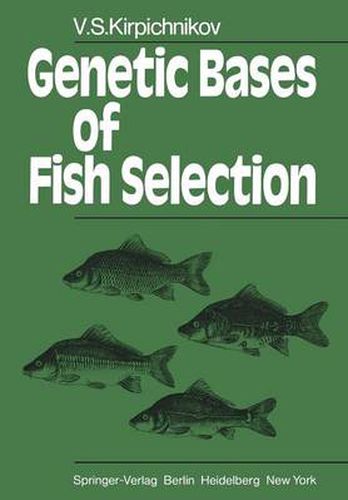Readings Newsletter
Become a Readings Member to make your shopping experience even easier.
Sign in or sign up for free!
You’re not far away from qualifying for FREE standard shipping within Australia
You’ve qualified for FREE standard shipping within Australia
The cart is loading…






This title is printed to order. This book may have been self-published. If so, we cannot guarantee the quality of the content. In the main most books will have gone through the editing process however some may not. We therefore suggest that you be aware of this before ordering this book. If in doubt check either the author or publisher’s details as we are unable to accept any returns unless they are faulty. Please contact us if you have any questions.
Fish resources in natural water bodies are tending to decrease due to intensified fishing, the extensive construction of hydropower plants on rivers, and the pollution of seas and freshwater basins by indus trial and agricultural wastes. Nowadays only artificial fish rearing can meet man’s requirements in fish products. Fish breeding is still very young as compared to plant breeding and animal husbandry. Although fishes have been reared artificially since ancient times in certain Asian countries, this usually included the cultivation of embryos and larvae caught in rivers and lakes. Among the exceptions, only the common carp Cyprinus carpio and the domesticated variety of the crucian carp, the goldfish Carassius auratus, which were cultivated in the East, may be mentioned. Com mon carp breeding began in China about 2000 years ago but was la ter banned by one of the emperors and started again only relatively recently. The goldfish has been cultivated for decorative purposes for about 1000 years. Many remarkable varieties of the goldfish have been developed in China and later in Japan. The first improved breeds (German races ) of the common carp known in Europe appeared after the domestication of the Da nube wild carp in the seventeenth and eighteenth centuries. Local breeds of the carp were probably established somewhat later in Chi na, Japan and Indonesia; even now these breeds have only minor differences as compared to their ancestor, the Asian wild carp.
$9.00 standard shipping within Australia
FREE standard shipping within Australia for orders over $100.00
Express & International shipping calculated at checkout
This title is printed to order. This book may have been self-published. If so, we cannot guarantee the quality of the content. In the main most books will have gone through the editing process however some may not. We therefore suggest that you be aware of this before ordering this book. If in doubt check either the author or publisher’s details as we are unable to accept any returns unless they are faulty. Please contact us if you have any questions.
Fish resources in natural water bodies are tending to decrease due to intensified fishing, the extensive construction of hydropower plants on rivers, and the pollution of seas and freshwater basins by indus trial and agricultural wastes. Nowadays only artificial fish rearing can meet man’s requirements in fish products. Fish breeding is still very young as compared to plant breeding and animal husbandry. Although fishes have been reared artificially since ancient times in certain Asian countries, this usually included the cultivation of embryos and larvae caught in rivers and lakes. Among the exceptions, only the common carp Cyprinus carpio and the domesticated variety of the crucian carp, the goldfish Carassius auratus, which were cultivated in the East, may be mentioned. Com mon carp breeding began in China about 2000 years ago but was la ter banned by one of the emperors and started again only relatively recently. The goldfish has been cultivated for decorative purposes for about 1000 years. Many remarkable varieties of the goldfish have been developed in China and later in Japan. The first improved breeds (German races ) of the common carp known in Europe appeared after the domestication of the Da nube wild carp in the seventeenth and eighteenth centuries. Local breeds of the carp were probably established somewhat later in Chi na, Japan and Indonesia; even now these breeds have only minor differences as compared to their ancestor, the Asian wild carp.